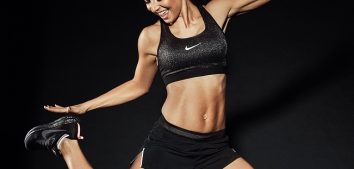
Breathing during Exercise
I have highlighted many times the importance of warm-up or stretching. Today I would like to focus on one more vital part of a training unit: the way you breathe while working out. Why is it so crucial?
On average, our body takes in oxygen and gets rid of carbon dioxide every 4 seconds, which basically means that it breathes. At rest, our breathing is automatic, we do not think about it. We could give up on many things in life, but it surely wouldn’t be breathing.
During exercise our breath is of vital importance. Staying healthy depends on the correct rhythm of breathing and movement, and it is also important for sports results. Imagine that at rest we breathe about 16 times per minute, which gives about one thousand breaths per hour, or the average time of the training unit. That’s a lot, isn’t it? What’s more, lung ventilation at rest is on average 6-8 liters per minute, and during physical activity it can exceed even 100 liters!
Take a look at the right breathing technique during exercise:
Tip 1
Inhale through the nose, exhale through the mouth. It seems to be unimportant, but I notice that many people have a problem with it. Therefore, the first thing you should learn is to breathe in through the nose, not through your mouth. While breathing in through the nose, the air is heated, additionally it is cleaned of dust or other mechanical pollution.
Tip 2
Studies show that exhalation increases muscle strength, and inhalation reduces it. That’s why exhalation should coincide with the moment of the greatest effort for the body, and inhalation – with the moment of the least effort. So, remember that if there’s a moment requiring a lot of effort during exercise, it should be connected with breathing out.
Tip 3
Breathing should always be natural and steady. You should refrain from stopping your breath during exercise. Your body needs more oxygen while training than at rest and not breathing the right way during training may contribute to the increase of blood pressure, impede blood flow to the brain, and may also make you feel tired faster during your workout.
Tip 4
Your breath should be adjusted to the intensity of your exercise. The more intense your workout, the more important it is to be able to breathe efficiently. The time proportion between inhaling and exhaling is crucial here, as well as the break between them and how you stress the intensity of breathing. At first glance, it might seem easy but correct breath will differ depending on the kind of sport you practice or the exercises.
Tip 5
In sport, there is a close correlation between the ability to breathe efficiently and the endurance of the body. The consequence of not paying attention to the proper way of breathing during training may be worse results – muscles are not able to work efficiently when they are not supplied with enough oxygen. Failure to observe this dependence reduces the possibility of getting a better sports result.
Tip 6
Train your breathing muscles! During your workout pay most attention to longer exhalation. The longer you exhale, the more valuable your next breath will be. A deep, correct breath regulates the way your heart and central nervous system work. It also improves blood circulation.
Tip 7
You should always finish your workout with stretching exercises as they help you relax after training. Proper breathing is also important in this part of your workout: focus on taking a deep breath, and then naturally breath out. As a result, stretching will be even more effective and will help you relax.
During your next training unit pay special attention to your breathing. Enjoy your workout 🙂
Bibliography:
- Plewa M., Markiewicz A. Aktywność fizyczna w profilaktyce i leczeniu otyłości. Endokrynologia, Otyłość i Zaburzenia Przemiany Materii. 2006; 2(1): 30–37.
- Starosta W. Znaczenie rytmu ruchów i oddychania w nauczaniu oraz doskonaleniu techniki ruchów. Zeszyty naukowe Uniwersytetu Szczecińskiego. Prace Instytutu Kultury Fizycznej. 2012; 771(28).









Comments No Comments
Join the discussion…